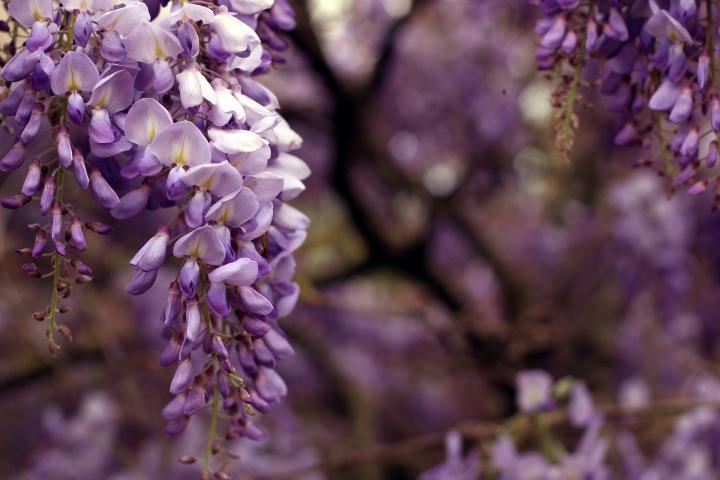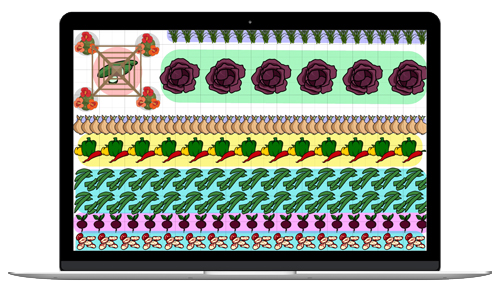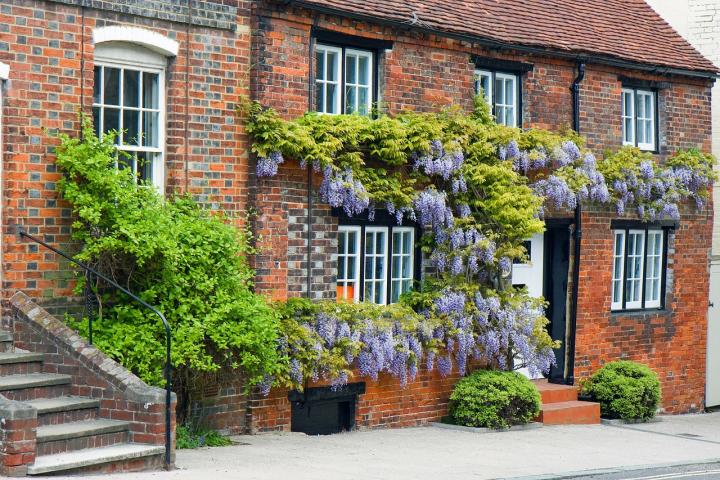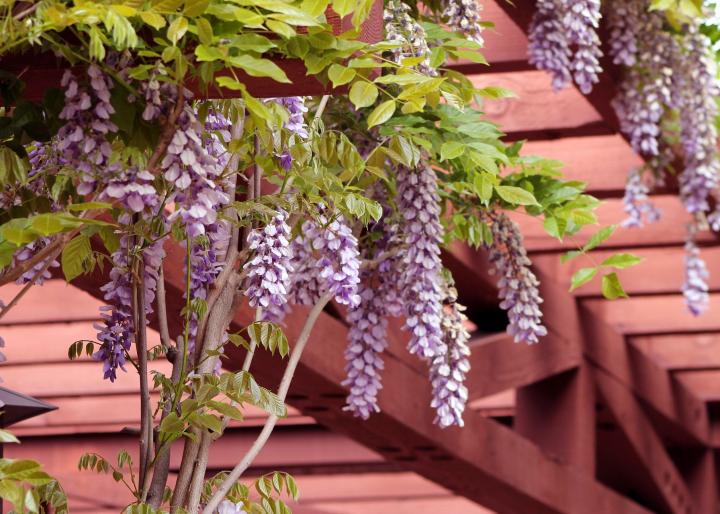
Planting, Growing, and Pruning Wisteria
The Almanac Garden Planner - Use It Free for 7 Days!
Plan your 2025 garden with our award-winning Garden Planner.
Types
Native Wisteria
If you are located in North America, consider planting a species of wisteria native to the continent, such as:
- American wisteria (W. frutescens) grows in Zones 5 to 9. It’s native to a range of states covering Virginia to Texas, southeast to Florida and north up through New York, Iowa, and Michigan. The vine grows 25 to 30 feet long with shiny dark-green leaves and large, drooping lilac or purple-blue flower clusters, which appear after the plant has leafed out. The blooms will only appear on new wood. However, note that the flowers tend to be more lightly fragrant than the Asian wisterias’ flowers.
- Kentucky wisteria (W. macrostachya) grows in Zones 4 to 9. This late-season bloomer is native to the southeastern U.S. and is similar to American wisteria (it is sometimes considered a variety or subspecies of American wisteria). Kentucky wisteria bears mildly fragrant bluish-purple flowers after growing only 2 to 3 years, making it the quickest wisteria to bloom.
- ‘Blue Moon’ is an extra-hardy cultivar of native Kentucky wisteria, with showy silvery-blue clusters. It blooms in late spring or early summer. It’s cold hardy to –30°F.
Non-Native Wisteria
- Chinese wisteria (W. sinensis) and Japanese wisteria (W. floribunda) are non-native, invasive species, so we do not recommend them for North American gardens, despite the fact that they are regularly sold at nurseries and garden centers. They are hardy in Zones 5 to 9 and are capable of growing 30 to 60 feet in length (and beyond in the Southern U.S.). Two common varieties of Japanese wisteria include:
- ‘Honbeni’ (syn. ‘Honko’): popular, bears clusters of pink flowers in late spring
- ‘Alba’ (syn. ‘Shiro Noda’): bears lovely clusters of pure-white flowers in late spring

ADVERTISEMENT
I have a 12x14 pergola on a 600 sqft patio. I am torn between which breed of wisteria should I plant and how many should I plant. we like blue flowers and are looking at Amethyst & Blue Moon wisteria. I was thinking of putting in two vines on opposing posts. We want it to start covering our pergola and blooming quickly. But i wonder now if two plants would be too much weight for a 12x14 pergola or not? Please help
I'd caution you about Wisteria and it's utterly invasive nature! It will crawl onto/into the house every chance it gets. It'll crawl into cracks in clapboard, shakes, and even vinyl! It's been known to get into foundation cracks and cause structural damage! Be sure to prune regularly and if you see any little vines making their way into/into the house, cut that guy back and hope his friends were watching so they got the message! LOL! As far as how many to plant, my suggestion would be start with 1, you can always add more later. Wisteria grows super fast so I wouldn't worry about it not covering the patio pergola. I've grown the Blue Moon variety and not only is it a super fast grower, but it's flowers are truly beautiful! I absolutely love it! Hope this helped, good luck!
I have 1 plant that is at least 10 years old. It is covering the entire pergola 12x12. I'm scared to think how heavy two would be.
An answer would seem to involve materials and structural design, about which we have no knowledge. All we might suggest is that you consult a builder and a nurseryman/woman. Oh, and if you hear the structure creaking, get out the pruning shears!
We recently purchased our home almost a year ago and this tree was here. I instantly fell in love with the beautiful hanging purple blooms! Not to mention they smell absolutely amazing! I would say mine stands about 8 feet tall and is full bloom with vines and bloomed flowers to the ground. I would love to have more than one of these in my yard. How do I go about getting more than one started from the one I already have?
I live in south western Indiana (on the border of Illinois) if this is an important factor!
I live in the Toronto, Ontario region and my wisteria barely bloomed last year and so far this year, as we still wait for spring to arrive, I don't see any buds as of yet. My husband can never find the time to prune it in the last 3 years. What should be done at this point so that it will bloom? Can pruning be done at this point, if so I'll pay someone to do it!
If the vines are not pruned, you may have a lot of green growth without flowers. You can prune in mid-summer and in the fall. Then, cut back in the spring to 3 to 5 buds from the previous year’s growth. Do not fear that you are pruning excessively. Wisteria can take it. Another common technique to jump start flowering is to “root prune” the wisteria. With a shovel, dig a trench around the plant to cut the roots. Cut the roots 2 to 3 feet from the trunk. Do not cut the roots too close to the trunk.
Hello I live in New York and have a wisteria with lots of blooms some larger than others 1-4inchs. We have some colder upcoming nights in the mid 30s and I'm wondering if I should attempt to protect them or if they can withstand those temperatures? Pleas help this is my first year with blooms and I don't want to lose them :)
Hi, Zachary: Wisteria can be damaged by frost, so throw a blanket over your plant(s) if you can! Thanks for asking and good luck!












